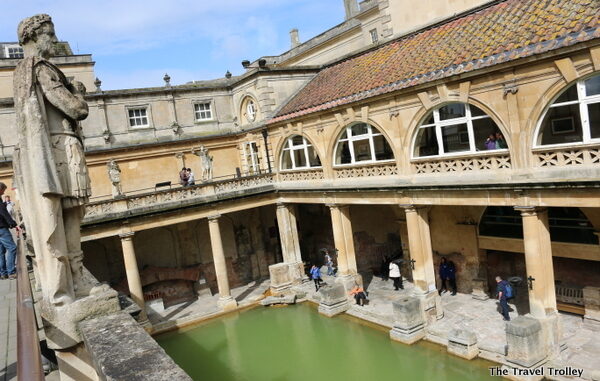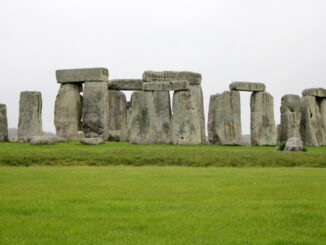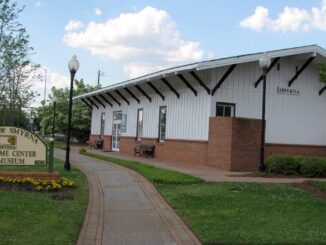
BATH, England — The Roman Baths for which this southwestern England city is named, are some of the most remarkable Roman ruins outside of Rome itself.
The natural hot springs were used long before the Romans under Emperor Claudius invaded Britain starting in 43 AD. Archaeological evidence shows human activity around the springs dating to 8,000 BC, though the area may have been too hot and swampy for a permanent settlement.
Today, the ruins stand at the center of this historic city of 88,000, located about 90 minutes west of London by train, and draw more than a million people to the charming city. The ruins, much like their counterparts in Rome itself, provide a marvelous insight into the magnificence of the buildings constructed by the Romans.
There are three hot springs beneath the city. The King’s Spring supplies the water to the Roman Baths while the Hetling and Cross springs feed Thermae Bath Spa, a public spa that opened in 2006.
In his Historia Regum Britanniae, now considered a largely fictional account of British History, Geoffrey of Monmouth says British King Bladud built the first baths on the site. Bladud did so, according to the legend, in 863 BC after the springs cured him and his herd of pigs of leprosy by merely wallowing in the warm mud.
Other historical evidence indicates the Celts likely built the first shrine here, dedicating it to the goddess Sulis.
After the Roman conquest, the Romans established the town of Aquae Sulis. The settlement was built as more of a retreat rather than a military town, like so many others formed throughout Britain.
A temple was constructed on the site of the springs between 60-70 AD, and a religious shrine and bathing complex was built on the site — a familiar attraction in cities throughout the Roman Empire.
The complex included cold and warm rooms, a central swimming pool and curative rooms. The central pool was lined with lead sheets, which remain in tact nearly 2,000 years after they were laid — a remarkable testament to the Romans’ engineering skills.
The Romans built the temple in honor of Sulis Minerva, a combination of Sulis and the Roman goddess Minerva, the goddess of wisdom. The Romans commonly maintained the deities of those they conquered so as not to upset the population.
The next few centuries were truly the golden era for the Roman baths in Bath. It was during this time the city became an international destination for pilgrims, attracting visitors from as far away as Germany.
The baths remained until the Roman withdrawal from the region in 410 AD. Following the battle of Dyrham in 577 AD, Bath fell under the control of the Saxons.
Eventually, the ruins were lost to history, settling beneath the Saxon settlement that grew up in the area. The Anglo-Saxon Chronicle, a collection of Old English annals originally created in the ninth century, suggested the baths had been destroyed.
In fact, new baths were built upon the Roman baths over the centuries, including in the 12th century when John of Tours constructed a curative bath on top of the King’s Spring reservoir. The Queen’s Bath was built during the 16th century.
Royal visits to the city during the 16th and 17th centuries helped entrench the city’s reputation. By the 18th century, new buildings erected gave the city its Georgian feel that is still present today.
The original Roman ruins were re-discovered in 1790, when workers building the Great Pump Room were excavating for foundations.
Check back for Part II.





